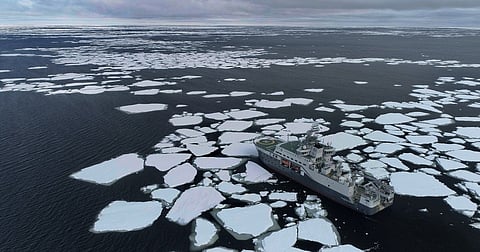
- Home
- Live Blog
- Breaking News
- Top Headlines
- Cities
- NE News
- Sentinel Media
- Sports
- Education
- Jobs

New Delhi: A team of Finnish researchers has developed a new suite of methods to test for the antivirulence and antibacterial effect of hundreds of unknown compounds from the Arctic Sea.
The team from the University of Helsinki targeted an enteropathogenic E. coli (EPEC) strain that causes severe diarrhoea in children under five, especially in developing countries. The compounds were derived from four species of actinobacteria and tested against EPEC adhering to colorectal cancer cells.
EPEC causes disease by adhering to cells in the human gut. Once it adheres to these cells, EPEC injects so-called “virulence factors” into the host cell to hijack its molecular machinery, ultimately killing it.
Two compounds showed strong antivirulence or antibacterial activity: one from an unknown strain (T091-5) in the genus Rhodococcus and another from an unknown strain (T160-2) of Kocuria. The compound from T091-5 was most likely a phospholipid, a class of fatty phosphorus-containing molecules that play important roles in cell metabolism.
“Here we show how advanced screening assays can identify antivirulence and antibacterial metabolites from actinobacteria extracts,” said Dr. Paivi Tammela, a professor at the University of Helsinki in Finland. The molecule from T091-5 did not inhibit the development of EPEC bacteria, in contrast to the compounds from T160-2.
Of the two strains, T091-5 is the most promising since EPEC is less likely to develop resistance to its antivirulence actions.
Using sophisticated analytical techniques, the team found that the active component from T091-5 was most likely a phospholipid — a family of fatty phosphorus-containing molecules vital for cell metabolism. But this is subject to further studies, they noted, in the paper published in the journal Frontiers in Microbiology.
“The next steps are the optimisation of the culture conditions for compound production and the isolation of sufficient amounts of each compound to elucidate their respective structures and further investigate their respective bioactivities,” said Tammela. (IANS)
Also Read: Arctic cloud ice formation is influenced by biological particles
Also Watch: